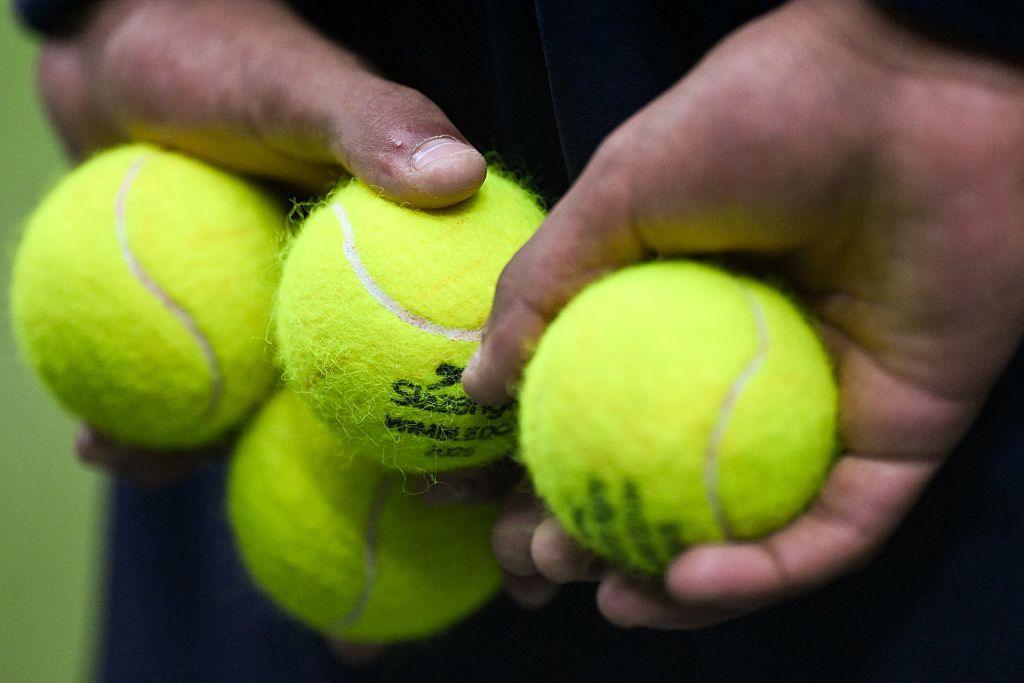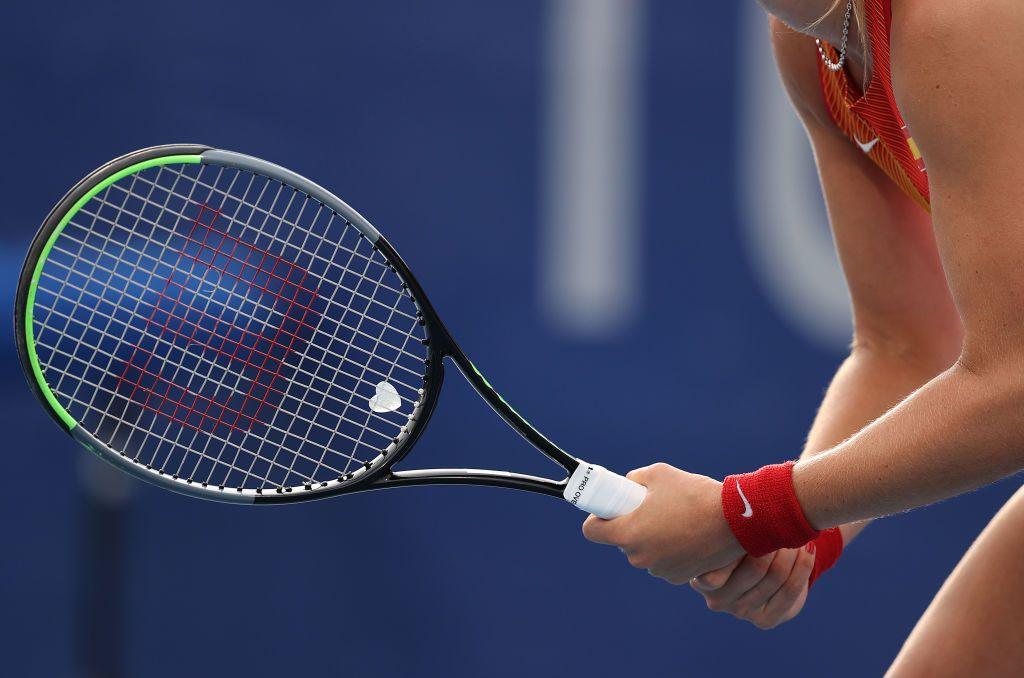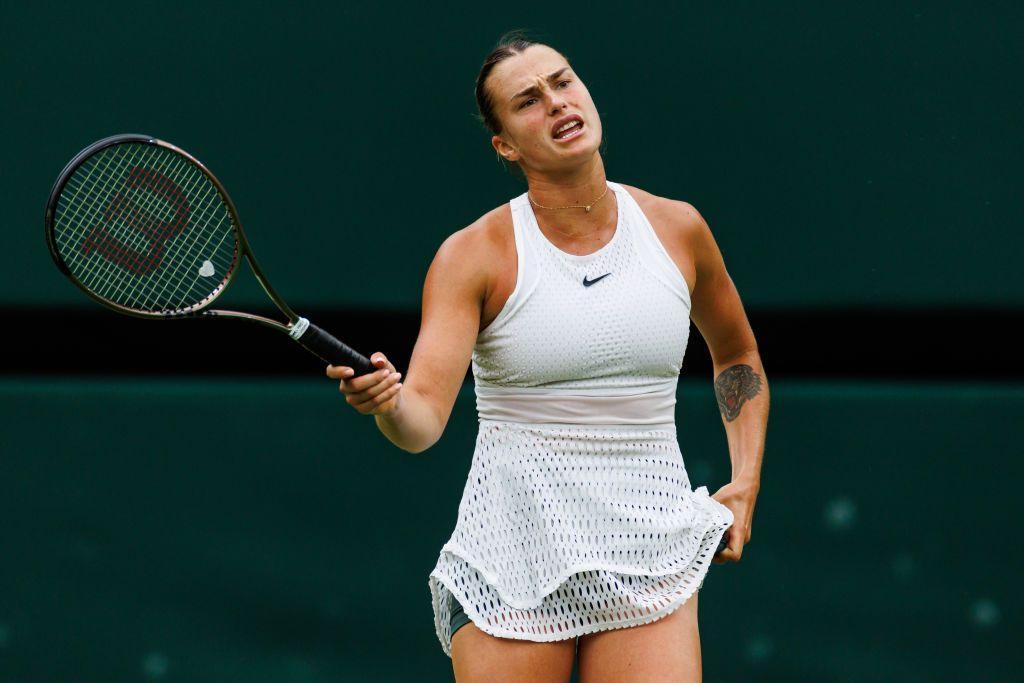Introduction
Syphilis relapse remains a significant clinical challenge, reportedly occurring in a percentage of patients, which can vary widely depending on factors like immune status and treatment adequacy, who receive standard therapy, with recurrence rates potentially higher among immunocompromised individuals or those with incomplete treatment.1,2 Early relapses (≤2 years post-infection) typically manifest as recurrent mucocutaneous lesions (eg, maculopapular rashes, condylomata lata), lymphadenopathy, and neuro-ophthalmic symptoms (headaches, blurred vision), whereas late relapses may involve cardiovascular complications or gummatous lesions.3,4 Definitive diagnosis often requires integrated serological evaluation—combining treponemal (eg, TPPA/TPHA) and nontreponemal (eg, RPR/VDRL) tests with quantitative titers—and clinical assessment to differentiate true relapse from reinfection, especially in research or complex clinical scenarios.5
The pathogenesis of relapse involves multifactorial interactions. First, Treponema pallidum subsp. pallidum can persist in immunoprivileged sanctuaries such as the central nervous system (CNS) and aqueous humor, where antibiotic penetration is suboptimal.6 Second, host immune dysregulation—prominently driven by HIV coinfection which can impair bacterial clearance—compromises therapeutic efficacy.7 Third, factors such as emerging antimicrobial resistance, particularly to macrolides, and high-risk sexual behaviors leading to reinfection can further complicate management and contribute to scenarios resembling relapse or actual treatment failure.
Current clinical guidelines emphasize risk-stratified therapeutic approaches, with the 2021 CDC Sexually Transmitted Infections Treatment Guidelines specifically recommending intensified regimens for recurrent early syphilis cases.8 For patients with recurrent secondary syphilis or those demonstrating serological persistence after initial therapy, the gold standard involves administering intramuscular benzathine penicillin G at 2.4 million units weekly for three consecutive weeks.8 This extended regimen aligns with both the World Health Organization’s 2021 syphilis management framework advocating enhanced therapy for high-risk recurrences,9 and the 2020 European guideline on the management of syphilis emphasizing CSF evaluation prior to retreatment in such complex cases.4 The three-dose protocol reflects contemporary understanding of potential undetected neuroinvasion in recurrent infections while maintaining practical treatment accessibility.8 Neuroinvasive relapse, similar to primary neurosyphilis, necessitates intravenous aqueous penicillin G (18–24 million units daily for 10–14 days) to achieve bactericidal concentrations in cerebrospinal fluid.10 In penicillin-allergic patients with neurosyphilis, ceftriaxone (2 g daily intravenously for 10–14 days) is a recommended alternative, preferred over doxycycline due to superior CNS penetration.10 The role of adjunctive immunomodulation in routine syphilis management is not established, although research continues in broader infectious disease contexts. This review aims to synthesize current advancements in clinical strategies and preclinical models pertinent to understanding and managing syphilis relapse, highlighting existing challenges and future research directions.
Preclinical models have been pivotal in elucidating relapse mechanisms. Rabbit infection models accurately replicate chancre progression and latent infection reactivation, enabling rigorous evaluation of antibiotic efficacy.11 Humanized mouse models have uncovered T. pallidum immune evasion strategies, such as downregulation of MHC-II expression on antigen-presenting cells.12 Breakthroughs in in vitro cultivation systems (eg, Sf1Ep epithelial cell co-culture) now permit sustained T. pallidum propagation, facilitating high-throughput drug susceptibility testing and vaccine antigen screening.13,14 These models collectively provide a translational framework for developing relapse-prevention strategies, though, as will be discussed, their limitations necessitate careful interpretation when extrapolating findings to complex human relapse scenarios.
Overview of Syphilis Recurrence
Etiology and Epidemiology of Syphilis
Syphilis is a chronic systemic infection caused by the spirochete Treponema pallidum subsp. pallidum, a highly motile pathogen with tropism for mucocutaneous and neural tissues.14 Globally, the World Health Organization (WHO) estimates 7.1 million new syphilis cases annually, with disproportionate burdens in low-resource regions of sub-Saharan Africa and South Asia.15 Historical records trace its introduction to China via maritime trade in 1505 CE (Common Era), followed by near-elimination in the mid-20th century and a dramatic resurgence post-1980s.16 Contemporary surveillance data indicate that China now reports over 500,000 annual cases, constituting the highest incidence of bacterial sexually transmitted infections nationally.17 Transmission occurs predominantly through sexual contact (≥95% of cases), with vertical transmission, blood exposure, and iatrogenic routes accounting for minor proportions. The disease exhibits a protean clinical course, ranging from asymptomatic latency to multisystem involvement, with a percentage of adequately treated patients experiencing recurrence due to bacterial persistence or reinfection.18 The resurgence in general syphilis incidence directly increases the population base susceptible to experiencing relapse, underscoring the public health importance of understanding and managing this complication.
Figures 1 and 2 illustrate recent epidemiological patterns in Tokyo (2019–2022), revealing male predominance (male-to-female ratio: 3.8:1) and high transmission rates among men who have sex with men (MSM) (62% of cases), underscoring the role of high-risk sexual networks in syphilis resurgence.19
|
Figure 1 Incidence of syphilis by sex and age in Tokyo from 2019 to 2022 ((A) men, (B) women), excluding one woman patient with unknown age in 2020.
|
 |
Figure 2 (Color online) Incidence of syphilis by sexual partners in Tokyo from 2019 to 2022. MSM (green), men who have sex with men; MSW (blue), men who have sex with women; WSM (red), women who have sex with men.
|
Definition and Clinical Manifestations of Syphilis Recurrence
Definition of Syphilis Recurrence
Syphilis recurrence is defined as the recrudescence of clinical or serological activity following documented adequate antimicrobial therapy, indicating either incomplete pathogen eradication or reinfection with distinct T. pallidum strains.20 Diagnostic criteria require: (1) reappearance of pathognomonic mucocutaneous lesions (eg, chancre, condylomata lata); (2) a fourfold rise in nontreponemal antibody titers (RPR/VDRL); and (3) exclusion of reinfection through molecular typing and partner tracing (the former, molecular typing, representing an ideal approach often utilized in research settings rather than being a universally applied standard in routine clinical practice for distinguishing relapse from reinfection). Recurrence signifies treatment failure and is epidemiologically critical due to associations with enhanced transmissibility and emergence of antibiotic resistance.
Clinical Manifestations of Syphilis Recurrence
Recurrent syphilis demonstrates multisystem involvement with distinct phenotypic patterns. Primary recurrence often manifests as painless genital or anal ulcers with indurated borders. Secondary recurrence, typically occurring 4–10 weeks after latency, presents with a characteristic generalized copper-red maculopapular rash, frequently involving the palms and soles, and is often accompanied by generalized lymphadenopathy; while atypical lesions (eg, papular, vesicular) may be reported in case studies of recurrent syphilis, these macular and papular eruptions are considered typical.21 Neurologic complications, as detailed in systematic reviews and case series, are observed in a proportion of cases, particularly if untreated, and can include meningitis, cranial nerve palsies such as optic neuritis, and in late stages, progress to irreversible sequelae like tabes dorsalis due to central nervous system (CNS) infiltration, with imaging studies occasionally revealing rare manifestations like cranial osteomyelitis.22,23 Systemic features such as low-grade fever, hepatosplenomegaly, and arthralgia are common, often mimicking symptoms found in autoimmune or viral syndromes, thus necessitating careful clinical differentiation aided by serological testing.24 Notably, asymptomatic serological recurrence occurs, with studies in HIV-infected populations reporting a significantly higher proportion of asymptomatic cases during relapse (62.2%) compared to initial infection (21.9%), detectable only through serial serologic monitoring (using RPR titers),25 emphasizing the necessity for post-treatment surveillance. The diverse clinical presentations of syphilis recurrence are summarized in Table 1.
 |
Table 1 Key Clinical Manifestations of Syphilis Recurrence
|
Factors Influencing Syphilis Recurrence
Syphilis recurrence is mediated by complex host-pathogen-environment interactions. Suboptimal treatment regimens—particularly inadequate penicillin dosing (eg, less than typically recommended for the specific stage or relapse scenario) or nonadherence to the prescribed therapy duration—constitute a primary modifiable risk. This inadequacy can permit bacterial persistence in immune-privileged niches such as the central nervous system and ocular compartments, and potentially through mechanisms such as biofilm formation which allow bacteria to evade host defenses and antibiotics.26,27 Immunocompromised hosts, prominently including HIV-coinfected individuals (who show a significantly increased risk, for example, a reported hazard ratio [HR] of 3.2, 95% CI 1.8–5.6, due to impaired CD4+ T cell function and chronic immune activation leading to dysregulated cellular immunity) and those receiving corticosteroids, exhibit impaired pathogen clearance.28 This often results in poorer serological responses post-treatment, such as a serofast state (failure of RPR titers to decline adequately).7 Behavioral determinants are also critical; cohort studies indicate that unprotected sexual contact with untreated partners and having multiple sexual partners can increase reinfection risk two- to threefold.29 Furthermore, substance use disorders, such as methamphetamine use, may act synergistically to promote transmission and thus the likelihood of reinfection.30 Emerging antimicrobial resistance further complicates recurrence; for instance, surveillance studies, including data from China, report a high prevalence (eg, ranging from 85% to over 95% in some regional analyses) of clinical Treponema pallidum isolates harboring the 23S rRNA A2058G mutation.31,32 This mutation confers high-level macrolide resistance, rendering azithromycin ineffective for salvage therapy and potentially necessitating extended or alternative antibiotic regimens, even if the initial clinical disease course caused by resistant strains appears similar to that of sensitive strains.33
Clinical Strategies for Syphilis Recurrence
Therapeutic Drugs for Syphilis Recurrence
Syphilis recurrence management requires evidence-based antimicrobial regimens tailored to disease stage, host immunity, and antibiotic resistance patterns. While benzathine penicillin G (BPG) remains the gold standard for primary and secondary syphilis, recurrent cases demand prolonged therapy and enhanced pharmacovigilance due to risks of neuroinvasion and treatment failure.8
Penicillin-based regimens are first-line. For late syphilis and secondary recurrent syphilis, the recommended regimen is often 2.4 million units of intramuscular BPG administered weekly for 3 consecutive weeks.10 This long-acting formulation achieves sustained treponemicidal concentrations (>0.018 µg/mL) for an extended period, effectively penetrating skin and mucosal lesions. For neurosyphilis, intravenous aqueous penicillin G (18–24 million units daily, typically administered as 3–4 million units IV every 4 hours or by continuous infusion, for 10–14 days) is the standard regimen to achieve adequate CSF concentrations.10 Pretreatment penicillin skin testing is critical, as IgE-mediated hypersensitivity occurs in a small percentage of recipients, necessitating desensitization protocols when unavoidable.34
In penicillin-allergic patients, alternative regimens require careful selection based on resistance surveillance. In penicillin-allergic patients with neurosyphilis, a recommended alternative is ceftriaxone (2 g daily intravenously or intramuscularly for 10–14 days).10 This regimen is considered to achieve sufficient CSF penetration for neurosyphilis. Doxycycline (100 mg orally twice daily for 30 days) is an alternative for non-pregnant, penicillin-allergic patients with late or recurrent syphilis, although close serological monitoring is essential.10 Macrolides like azithromycin are generally contraindicated in regions with high resistance prevalence; for instance, global surveillance, including data from China, indicates widespread 23S rRNA mutations (eg, A2058G) conferring high-level macrolide resistance, with some reports indicating MICs > 256 µg/mL for resistant strains.35 Selected guideline-based treatment regimens for syphilis recurrence are outlined in Table 2.
 |
Table 2 Selected Treatment Regimens for Syphilis Recurrence (Illustrative, Based on Guidelines Like CDC/WHO)
|
Treatment Plan for Syphilis Recurrence
Comprehensive management of recurrent syphilis integrates stage-appropriate antibiotics, potential adjunctive measures where indicated (though not standard), and structured serological surveillance. The 2021 CDC guidelines recommend specific regimens based on syphilis stage; for instances such as late latent syphilis or syphilis of unknown duration, which can encompass some recurrence scenarios, extended BPG regimens (eg, 3 weekly doses) are advised, in contrast to the single dose for primary syphilis, partly to address potential persistence in sites like immune-privileged reservoirs.8 For late recurrent syphilis with cardiovascular or gummatous involvement, BPG 2.4 million units weekly for 3 weeks remains standard;10 some clinicians may consider a short course of prednisone (eg, 20 mg/day for 24 hours pre-penicillin) to mitigate Jarisch-Herxheimer reactions in a significant proportion of patients.
Adjunctive therapies play a limited and largely investigational role. Some studies on Traditional Chinese Medicine (TCM) have explored formulations like Astragalus membranaceus, reporting in vitro immunostimulatory effects, but their clinical utility in syphilis recurrence is not established.36 Other experimental approaches are confined to preclinical research.
Post-treatment surveillance, as recommended by guidelines such as those from the CDC, typically involves quantitative nontreponemal testing (RPR/VDRL) at intervals like 6, 12, and 24 months, depending on the syphilis stage and HIV status, with additional follow-up for HIV-infected individuals (eg, at 3, 6, 9, 12, and 24 months for early syphilis).8 A fourfold decline in nontreponemal antibody titers (eg, by 6–12 months for early syphilis) is generally considered indicative of an adequate response to therapy.8 CSF analysis is crucial in cases of suspected neurologic involvement, treatment failure, or for patients with HIV and syphilis who have neurologic symptoms or late latent syphilis.8 Therapeutic failure requires repeat BPG courses or alternative regimens like ceftriaxone for salvage therapy, guided by clinical judgment and, where available, molecular resistance testing (PCR detection of 23S rRNA/16S rRNA mutations).37
Preclinical Models for Syphilis Recurrence Research
Given the variable clinical manifestations of syphilis, its capacity to mimic other diseases, and the emergence of antibiotic resistance, studies on clinical strategies and preclinical models for syphilis recurrence are critically important. Preclinical models are indispensable in syphilis research, not only advancing the understanding of its pathogenesis but also providing essential platforms for developing novel therapeutics and vaccines.38
Methods for Establishing Preclinical Models of Syphilis
The development and utilization of robust preclinical models are foundational to advancing our understanding of Treponema pallidum infection and for testing new interventions.39,40
Establishment of Animal Models
Animal models remain the most widely utilized tools in preclinical syphilis studies. Successful syphilis spirochete infection models have been established in rabbits,39 non-human primates (eg, macaques),41 hamsters,42 guinea pigs,43 and mice.44
Rabbit Model
Rabbits exhibit high susceptibility to Treponema pallidum and are extensively employed in syphilis research.45 Experimental syphilis infections in rabbits replicate pathological changes observed in natural human infections.46 Typically, a Treponema pallidum suspension is inoculated into rabbit testicles or other regions to establish infection. Post-inoculation, clinical symptoms, pathological changes, and serological responses are monitored to evaluate infection progression and treatment efficacy. Although genetic modification of rabbits remains challenging, advancements in gene-editing technologies such as CRISPR/Cas9 may enable future development of immunodeficient or gene-knockout rabbit models for syphilis studies.
Mouse Model
The mouse model has become a valuable tool due to low inter-individual variability, cost-effectiveness, and reagent availability. Recent establishment of a C57BL/6 mouse syphilis infection model allows evaluation of Treponema pallidum colonization, dissemination, and host immune responses.47 However, interspecies differences in immune responses necessitate cautious extrapolation of murine findings to humans.
Non-Human Primate Model
Non-human primates (eg, macaques) offer physiological and immune systems closely resembling humans, making them ideal for syphilis research. However, ethical constraints and high costs limit their widespread use.48
Establishment of an in vitro Culture System
In vitro culture systems are critical for investigating Treponema pallidum biology, pathogenesis, and drug susceptibility.49 However, Treponema pallidum remains one of the most challenging pathogens to culture axenically. Recent advancements have enabled continuous in vitro growth through co-culture systems with cottontail rabbit epithelial cells.
Co-Culture System Development
Treponema pallidum is co-cultured with cottontail rabbit epithelial cells in specialized media under tightly controlled temperature, humidity, and gas composition to replicate physiological growth conditions.50
Genetic Tool Development
Functional genetic studies using homologous recombination have identified key virulence genes in Treponema pallidum. Targeted gene replacement facilitates investigation of gene-specific roles in pathogenesis, informing therapeutic and vaccine strategies.51
Establishment of Heterologous Expression Models
Prior to in vitro co-culture systems, heterologous expression models using surrogate pathogens (eg, Borrelia burgdorferi) enabled functional characterization of Treponema pallidum proteins. These models allow expression of specific spirochetal proteins to study their biological roles and pathogenic mechanisms.51
Characteristics of Different Preclinical Syphilis Models
The choice of a preclinical model depends on the specific research question, available resources, and ethical considerations. Each model type offers unique advantages and disadvantages, as summarized in Table 3.
 |
Table 3 Overview and Comparison of Key Preclinical Models for Syphilis Research
|
In vitro Culture Models
In vitro models simulate Treponema pallidum growth in human-like environments, enabling studies on microbial biology, drug susceptibility, and polymicrobial interactions.52 Advantages include operational simplicity, cost-effectiveness, and experimental control. Limitations include slow bacterial growth rates and incomplete replication of human host complexity, potentially affecting result accuracy.
Animal Models
Animal models are pivotal for studying syphilis infection dynamics, pathology, and immunity.44 Mouse models are favored for acute toxicity and pharmacokinetic studies due to rapid reproduction and low cost. Rabbit models, with human-like skin architecture, are optimal for studying syphilitic dermatological manifestations. Non-human primate models provide high translational value for vaccine safety and efficacy evaluations but face ethical and financial barriers. Despite their utility, interspecies physiological and immunological differences necessitate cautious interpretation of findings.53
Tissue Culture Models
Tissue culture models employ in vitro human tissues or cells infected with Treponema pallidum to study host-pathogen interactions.48 These models elucidate syphilis pathogenesis and therapeutic responses but face challenges in tissue sourcing and culture condition standardization. Recent advances in tissue engineering have introduced artificial skin and vascular constructs as reproducible platforms for syphilis research, offering novel avenues for therapeutic development.54
Bioinformatics-Driven Models
Advances in bioinformatics have enabled genome-, transcriptome-, and proteome-based modeling of Treponema pallidum. These high-throughput approaches integrate genomic sequences, expression profiles, and protein networks to identify therapeutic targets and vaccine candidates.55 While offering cost and efficiency advantages, these models require rigorous validation of data quality and algorithmic accuracy.
Application Fields of Preclinical Models of Syphilis
The global resurgence of syphilis poses a significant public health challenge. While penicillin remains the first-line therapy, emerging macrolide and tetracycline resistance, coupled with the complex pathogenesis of Treponema pallidum, underscores the need for advanced preclinical models. These models are indispensable for advancing clinical diagnostics, therapeutic strategies, vaccine development, and public health policies. This section elaborates on the key applications of preclinical syphilis models.
Innovation in Syphilis Diagnostic Approaches
Preclinical models serve as critical platforms for validating novel diagnostic methodologies. Traditional serological tests, such as the Rapid Plasma Reagin (RPR) and Treponema pallidum Particle Agglutination Assay (TPPA), face limitations in sensitivity and specificity. Recent advancements in molecular biology have spurred interest in nucleic acid amplification tests (NAATs), which detect Treponema pallidum DNA in culture-resistant samples. Preclinical models enable rigorous validation of NAAT accuracy and reliability.56 Furthermore, novel diagnostic platforms, such as the Kodecytes assay which utilizes red cell kodecytes with T. pallidum lipoprotein peptide antigens for agglutination testing, are being evaluated and show promise for routine blood center screening, with preclinical and initial clinical validation highlighting their potential utility.57 Additionally, non-coding RNAs (ncRNAs) and microRNAs, identified as emerging diagnostic biomarkers, have undergone preliminary evaluation in preclinical settings, offering promising avenues for early syphilis detection.58
Development of New Therapeutic Regimens and Alternative Medications
Preclinical models are pivotal for evaluating novel therapeutics and combating antibiotic resistance. Although penicillin remains effective, prolonged use risks resistance emergence. Preclinical models allow systematic assessment of antibiotic efficacy and novel treatment modalities. Furthermore, vaccines targeting Treponema pallidum outer membrane proteins (OMPs) have shown preliminary success in preclinical trials, highlighting their potential for syphilis prevention.59
Investigation of Pathogenesis
Preclinical models elucidate the mechanisms underlying Treponema pallidum pathogenicity. By replicating infection dynamics, researchers observe spirochetal proliferation, migration, and host immune interactions. Rabbit models reveal that components of T. pallidum, such as inner flagella, can modulate lesion severity, emphasizing immune regulation in disease progression.60 Additionally, studies using these models uncover immune evasion strategies, such as antigenic variation of TprK membrane proteins, advancing our understanding of syphilis persistence.45
Validation Platform for Vaccine Development
Preclinical models are indispensable for evaluating vaccine candidates. Despite challenges in syphilis vaccine development due to pathogen complexity, preclinical trials assess vaccine-induced immune responses and protective efficacy. Recent focus on OMPs and peripheral membrane lipoproteins as immunogens has yielded promising preclinical results, informing clinical trial design.61
Formulation of Public Health Policies
Insights from preclinical research inform evidence-based public health strategies. By analyzing syphilis epidemiology, pathogenesis, and therapeutic outcomes, researchers provide actionable recommendations to policymakers, facilitating the design of targeted prevention programs to reduce syphilis incidence and mortality.62 The resurgence of syphilis has been recognized as a public health emergency in several regions, including the United States, and is a growing concern globally, underscoring the urgent need for effective public health interventions informed by robust surveillance and research.63 For instance, recent data from Eastern India highlight the re-emergence of syphilis among blood donors, signaling a looming threat to public health and transfusion services that demands policy attention.63
Limitations of Preclinical Models of Syphilis
Despite their utility, preclinical models face significant constraints that hinder translational progress in syphilis research.
Discrepancies Between Model Organisms and Humans
Interspecies physiological and immunological differences limit the translatability of preclinical findings. For example, murine models exhibit attenuated inflammatory responses and lack overt clinical manifestations, failing to fully recapitulate human syphilis pathology.64
Difficulties in the in vitro Cultivation of Treponema Pallidum
Treponema pallidum’s fastidious growth requirements, including microaerophilic conditions and a fragile outer membrane, complicate in vitro cultivation. Although advances like the Sf1Ep co-culture system enable limited propagation, challenges such as prolonged culture duration and technical complexity hinder large-scale applications.65
Challenges in Vaccine Development
Vaccine development is hampered by low expression and heterogeneity of OMPs, primary vaccine targets. Additionally, the intricate interplay between Treponema pallidum and host immune components necessitates multifactorial vaccine design, increasing developmental uncertainty.66
Ethical and Moral Concerns
Ethical constraints arise from the use of animal models in invasive procedures, necessitating adherence to welfare guidelines. Furthermore, societal sensitivities surrounding sexually transmitted infections pose challenges in study design and public engagement.67
Difficulty in Clinical Translation
Biological disparities between models and humans, combined with syphilis’s heterogeneous clinical presentation, complicate the extrapolation of preclinical results. Individualized optimization is required to bridge the gap between experimental findings and clinical applications.68
Conclusion and Research Prospects
Syphilis relapse presents a persistent and complex challenge in clinical practice, compounded by factors such as host immunocompromise, pathogen persistence mechanisms, and emerging antimicrobial resistance. This review has synthesized the current understanding of clinical management strategies, emphasizing guideline-recommended therapies and the critical role of serological monitoring. Furthermore, it has highlighted the indispensable contributions of preclinical models, including rabbit and mouse systems, as well as in vitro techniques, in dissecting pathogenesis, evaluating therapeutics, and guiding vaccine development. While significant progress has been made, the translational gap between preclinical findings and human clinical outcomes remains a key hurdle. Addressing this requires ongoing innovation in model development to better mimic human disease and a continued commitment to integrated research.
In the expansive domain of clinical strategies and preclinical model research addressing syphilis relapse, future investigations should prioritize multifaceted approaches to advance global syphilis prevention and control. Critical research directions must focus on elucidating the underlying mechanisms of relapse, refining therapeutic protocols, developing novel diagnostic modalities, and enhancing public health interventions. These efforts aim to establish evidence-based, targeted solutions for mitigating syphilis recurrence and transmission.
Mechanistic Elucidation of Syphilis Relapse
Syphilis relapse constitutes a multifactorial process involving pathogen persistence, host immune modulation, suboptimal treatment efficacy, and reinfection risks. Future studies should emphasize three interconnected domains:
First, the molecular mechanisms governing Treponema pallidum latency and reactivation warrant systematic exploration. Advanced genomic and transcriptomic methodologies, including high-throughput sequencing and single-cell RNA sequencing, could delineate spatiotemporal patterns of pathogen sequestration, gene regulatory networks during dormancy, and host-microbe interactions at cellular resolution.69 Such insights may inform strategies to disrupt bacterial reservoirs.
Second, longitudinal analyses of host immune dynamics are critical. Investigations should characterize the durability and plasticity of pathogen-specific cellular (eg, T-cell memory subsets) and humoral immune responses post-treatment.70 Particular emphasis should address how immune evasion mechanisms facilitate relapse and whether therapeutic immunomodulation could reinforce protective immunity.
Third, antimicrobial resistance surveillance requires expansion. Genomic characterization of treatment-failure cases must evaluate emergent macrolide resistance mutations (eg, 23S rRNA A2058G) and assess penicillin tolerance mechanisms.71 These efforts will guide antimicrobial stewardship and next-generation drug development.
Therapeutic Optimization and Innovation
While penicillin remains the therapeutic cornerstone, limitations persist regarding hypersensitivity risks and treatment failures.72 Three strategic priorities emerge:
First, antimicrobial discovery programs should leverage T. pallidum’s unique metabolic vulnerabilities, such as its reliance on host-derived lipids and limited biosynthetic pathways.73 Novel compounds targeting membrane integrity (eg, engineered lipopeptides) or essential enzymes (eg, TP0319 redox proteins) show preclinical promise.
Second, combination therapies merit rigorous evaluation. The potential for synergistic antibiotic combinations or carefully selected adjunctive therapies to enhance pathogen clearance and reduce relapse risks warrants further investigation in appropriate preclinical and clinical studies for syphilis.
Third, personalized treatment algorithms should integrate host biomarkers (eg, CSF-VDRL status, CD4+ T-cell counts) and pathogen load dynamics to stratify therapeutic intensity.74 Machine learning models incorporating serological trajectories may optimize retreatment decisions.
Advanced Diagnostic Development
Precision diagnostics are paramount for relapse prevention. Key innovations should address:
First, ultrasensitive molecular detection. Digital PCR platforms capable of identifying T. pallidum DNA in whole blood could enable earlier relapse identification compared to conventional RPR testing.75
Second, noninvasive sampling validation. Salivary IgA assays and urine-based lateral flow assays demonstrate high concordance with serum testing in pilot studies, offering advantages for resource-limited settings.76
Third, predictive biomarker discovery. Multi-omics profiling may identify relapse-associated signatures, such as elevated CXCL13 levels in CSF or skewed Th17/Treg ratios, facilitating preemptive interventions.
Data Sharing Statement
Data is provided within the manuscript files, further enquiries can be directed to the corresponding author.
Ethics Approval and Consent to Participate
Ethical approval was waived by the Ethics Committee of Chengdu Second People’s Hospital because the present study does not involve any human participants or animals. Informed consent to participate was waived because the present study does not involve any human participants.
Funding
There is no funding to report.
Disclosure
The author declares no competing interests in this work.
References
1. Malone JL, Wallace MR, Hendrick BB, et al. Syphilis and neurosyphilis in a human immunodeficiency virus type-1 seropositive population: evidence for frequent serologic relapse after therapy. Ame J Med. 1995;99(1):55–63. doi:10.1016/S0002-9343(99)80105-3
2. Yoon J, Haam IB, Chung KY, Lee MG, Lee JB. Relapsing syphilis. J Dermatol. 1993;20(7):436–440. doi:10.1111/j.1346-8138.1993.tb01314.x
3. Peeling RW, Mabey D, Kamb ML, Chen X-S, Radolf JD, Benzaken AS. Syphilis. Nat Rev Dis Primers. 2017;3:17073. doi:10.1038/nrdp.2017.73
4. Janier M, Unemo M, Dupin N, Tiplica G-S, Potočnik M, Patel R. 2020 European guideline on the management of syphilis. J Eur Acad Dermatol Venereol. 2021;35(3):574–588. doi:10.1111/jdv.16946
5. Jespers V, Stordeur S, Carville S, Crucitti T. Diagnosis and treatment of syphilis: 2019 Belgian national guideline for primary care. Acta Clinica Belgica. 2022;77(1):195–203. doi:10.1080/17843286.2020.1773112
6. Chow F. Neurosyphilis. Continuum. 2021;27(4):1018–1039. doi:10.1212/CON.0000000000000982
7. Wu Y, Lu L, Song X, et al. Clinical and immunological characteristics of HIV/syphilis co-infected patients following long-term antiretroviral treatment. Front Public Health. 2023;11:1327896. doi:10.3389/fpubh.2023.1327896
8. Workowski KA, Bachmann LH, Chan PA, et al. Sexually transmitted infections treatment guidelines, 2021. Recommendations Rep. 2021;70(4):1–187. doi:10.15585/mmwr.rr7004a1
9. World Health O. Guideline for the Management of Sexually Transmitted Infections. Geneva: World Health Organization; 2021.
10. Wang Q, Liu Q, Xu J. Diagnosis and treatment guidelines for syphilis, gonorrhea and genital chlamydia trachomatis infections (2020). Chin J Dermatol. 2020;53(3):12.
11. Edmondson DG, Hu B, Norris SJ. Long-term in vitro culture of the syphilis spirochete Treponema pallidum subsp. pallidum. mBio. 2018;9(3):e01153–01118. doi:10.1128/mBio.01153-18
12. Parker ML, Houston S, Wetherell C, et al. The Tp0796 lipoprotein of Treponema pallidum is a bimetal-dependent FAD pyrophosphatase with a potential role in flavin homeostasis. J Biol Chem. 2019;294(13):5157–5171. doi:10.1074/jbc.RA118.005297
13. Lithgow KV, Hof R, Wetherell C, et al. A defined syphilis vaccine candidate inhibits dissemination of Treponema pallidum subspecies pallidum. Nat Commun. 2017;8(1):14273. doi:10.1038/ncomms14273
14. Radolf JD, Deka RK, Anand A, Šmajs D, Norgard MV, Yang XF. Treponema pallidum, the syphilis spirochete: making a living as a stealth pathogen. Nat Rev Microbiol. 2016;14(12):744–759. doi:10.1038/nrmicro.2016.141
15. Rowley J, Vander Hoorn S, Korenromp EL, et al. Global and regional estimates of the prevalence and incidence of four curable sexually transmitted infections in 2016. Bull World Health Org. 2019;97(8):548–562. doi:10.2471/BLT.18.228486
16. Wu H, Wang C, Wang X-J, et al. Syphilis in China from 2013 to 2018: epidemiological trends and spatial patterns. Lancet Reg Health Western Pacific. 2021;10:100115.
17. National Center for Std Control CCDC. Syphilis epidemiology in China (2020). Chin J Dermatol. 2021;54(6):471–475.
18. Marra CM, Maxwell CL, Tantalo LC, Sahi SK, Lukehart SA. Normalization of cerebrospinal fluid abnormalities after neurosyphilis therapy: does HIV status matter? Clin Infect Dis. 2004;38(7):1001–1006. doi:10.1086/382532
19. Murata Y, Yoshida A, Suzuki E, et al. Epidemiology of syphilis in Tokyo from 2019 to 2022: a descriptive epidemiological study. Japanese J Infect Dis. 2024;77(5):274–280. doi:10.7883/yoken.JJID.2024.012
20. Tuddenham S, Ghanem KG. Management of adult syphilis: key questions to inform the 2021 centers for disease control and prevention sexually transmitted infections treatment guidelines. Clin Infect Dis. 2022;74(Suppl_2):S127–s133. doi:10.1093/cid/ciac060
21. Magri F, Donà MG, Panetta C, et al. Unusual clinical manifestation and challenging serological interpretation of syphilis: insights from a case report. BMC Infect Dis. 2021;21(1):521. doi:10.1186/s12879-021-06199-0
22. Du FZ, Zhang HN, Li JJ, et al. Neurosyphilis in China: a systematic review of cases from 2009-2021. Front Med. 2022;9:894841. doi:10.3389/fmed.2022.894841
23. Ohira K, Hashimoto N, Kanai D, Inoue Y. Novel and characteristic radiological features of neurosyphilis: a case series. BMC Neurol. 2024;24(1):248. doi:10.1186/s12883-024-03762-5
24. Samuels H, Malov M, Saha Detroja T. Autoimmune disease classification based on PubMed text mining. J Clin Med. 2022;11(15). doi:10.3390/jcm11154345
25. Kenyon C, Osbak KK, Apers L. Repeat syphilis is more likely to be asymptomatic in hiv-infected individuals: a retrospective cohort analysis with important implications for screening. Open Forum Infectious Dis. 2018;5(6):ofy096. doi:10.1093/ofid/ofy096
26. La Rosa R, Johansen HK, Molin S. Persistent bacterial infections, antibiotic treatment failure, and microbial adaptive evolution. Antibiotics. 2022;11(3):419. doi:10.3390/antibiotics11030419
27. Kollef MH. Inadequate antimicrobial treatment: an important determinant of outcome for hospitalized patients. Clin Infect Dis. 2000;31 Suppl 4:S131–138. doi:10.1086/314079
28. Hazenberg MD, Otto SA, van Benthem BH, et al. Persistent immune activation in HIV-1 infection is associated with progression to AIDS. AIDS. 2003;17(13):1881–1888. doi:10.1097/00002030-200309050-00006
29. Luo Z, Zhu L, Ding Y, et al. Factors associated with syphilis treatment failure and reinfection: a longitudinal cohort study in Shenzhen, China. BMC Infectious Dis. 2017;17(1):620. doi:10.1186/s12879-017-2715-z
30. Niccolai LM, Livingston KA, Laufer AS, Pettigrew MM. Behavioural sources of repeat Chlamydia trachomatis infections: importance of different sex partners. Sexual Transmitted Infect. 2011;87(3):248–253. doi:10.1136/sti.2010.045484
31. Lu H, Li K, Gong W, et al. High frequency of the 23S rRNA A2058G mutation of Treponema pallidum in Shanghai is associated with a current strategy for the treatment of syphilis. Emerg Microbes Infect. 2015;4(2):e10. doi:10.1038/emi.2015.10
32. Wang X, Abliz P, Deng S. Molecular characteristics of macrolide resistance in Treponema pallidum from patients with latent syphilis in Xinjiang, China. Infection Drug Resistance. 2023;16:1231–1236. doi:10.2147/IDR.S400068
33. Zhao F, Liu J, Shi W, et al. Antimicrobial susceptibility and genotyping of Mycoplasma pneumoniae isolates in Beijing, China, from 2014 to 2016. Antimicrob Resistance Infect Cont. 2019;8:18. doi:10.1186/s13756-019-0469-7
34. Pongdee T, Li JT. Evaluation and management of penicillin allergy. Mayo Clinic Proceedings. 2018;93(1):101–107. doi:10.1016/j.mayocp.2017.09.020
35. Vester B, Douthwaite S. Macrolide resistance conferred by base substitutions in 23S rRNA. Antimicrob Agents Chemother. 2001;45(1):1–12. doi:10.1128/AAC.45.1.1-12.2001
36. Liu J, Li F, Lu L, et al. Astragalus membranaceus enhances CD4+ T-cell-mediated immunity in latent syphilis patients: a randomized controlled trial. Phytomedicine. 2020;67:153153.
37. Pillay A. Molecular typing of Treponema pallidum: current understanding and future directions. Current Opinion Infectious Dis. 2021;34(1):47–53.
38. Robinson NB, Krieger K, Khan FM, et al. The current state of animal models in research: a review. Int J Surg. 2019;72:9–13. doi:10.1016/j.ijsu.2019.10.015
39. Xiong S, Liu Z, Zhang X, et al. Resurgence of syphilis: focusing on emerging clinical strategies and preclinical models. J Transl Med. 2023;21(1):917. doi:10.1186/s12967-023-04685-4
40. Zheng YW, Zheng XQ, Guo YF, et al. Characteristics of immune response and pathogen tissue dissemination during progressive Treponema pallidum infection: insights from humanized mice. Scand J Immunol. 2025;101(3):e70005. doi:10.1111/sji.70005
41. Tansey C, Zhao C, Hopkins A, et al. A nonhuman primate model for rectally transmitted syphilis. J Infectious Dis. 2018;217(7):1139–1144. doi:10.1093/infdis/jix669
42. Schell RF, LeFrock JL, Chan JK, Bagasra O. LSH hamster model of syphilitic infection. Infection Immun. 1980;28(3):909–913. doi:10.1128/iai.28.3.909-913.1980
43. Wicher K, Wicher V. Median infective dose of Treponema pallidum determined in a highly susceptible Guinea pig strain. Infection Immun. 1991;59(1):453–456. doi:10.1128/iai.59.1.453-456.1991
44. Silver AC, Dunne DW, Zeiss CJ, et al. MyD88 deficiency markedly worsens tissue inflammation and bacterial clearance in mice infected with Treponema pallidum, the agent of syphilis. PLoS One. 2013;8(8):e71388. doi:10.1371/journal.pone.0071388
45. Romeis E, Lieberman N, Molini B, et al. Treponema pallidum subsp. pallidum with an Artificially impaired TprK antigenic variation system is attenuated in the Rabbit model of syphilis. PLOS Pathogens. 2023;19:e1011259.
46. Carlson JA, Dabiri G, Cribier B, Sell S. The immunopathobiology of syphilis: the manifestations and course of syphilis are determined by the level of delayed-type hypersensitivity. Ame J Dermatopathol. 2011;33(5):433–460. doi:10.1097/DAD.0b013e3181e8b587
47. Lu S, Zheng K, Wang J, et al. Characterization of Treponema pallidum dissemination in C57BL/6 Mice. Front Immunol. 2021;11:577129.
48. Schmidt JK, Jones K, Van Vleck T, Emborg ME. Modeling genetic diseases in nonhuman primates through embryonic and germline modification: considerations and challenges. Sci Transl Med. 2022;14:eabf4879.
49. Kidd SE, Grey JA, Torrone EA, Weinstock HS. Increased methamphetamine, injection drug, and heroin use among women and heterosexual men with primary and secondary syphilis – United States, 2013-2017. MMWR Morbidity Mortality Weekly Rep. 2019;68(6):144–148. doi:10.15585/mmwr.mm6806a4
50. Riley BS, Cox DL. Cultivation of cottontail rabbit epidermal (Sf1Ep) cells on microcarrier beads and their use for suspension cultivation of Treponema pallidum subsp. pallidum. Appl Environ Microbiol. 1988;54(11):2862–2865. doi:10.1128/aem.54.11.2862-2865.1988
51. Zheng K, Xu M, Xiao Y, Yuan S, Chen X, Wu Y. Immunogenicity and protective efficacy against Treponema pallidum in New Zealand rabbits immunized with plasmid DNA encoding flagellin. Emerg Microbes Infections. 2018;7(1):177. doi:10.1038/s41426-018-0176-0
52. Barger N, Hanson KL, Teffer K, Semendeferi K, Schenker-Ahmed NM. Evidence for evolutionary specialization in human limbic structures. Front Human Neurosci. 2014;8:277. doi:10.3389/fnhum.2014.00277
53. Kennedy R, Shearer M, Hildebrand W. Nonhuman primate models to evaluate vaccine safety and immunogenicity. Vaccine. 1997;15(8):903–908. doi:10.1016/S0264-410X(96)00277-0
54. Frueh F, Menger M, Lindenblatt N, Giovanoli P, Laschke M. Current and emerging vascularization strategies in skin tissue engineering. Crit Rev Biotechnol. 2017;37(6):613–625. doi:10.1080/07388551.2016.1209157
55. Jaiswal K, Tiwari S, Jamal S, Barh D, Azevedo V, Soares S. An in silico identification of common putative vaccine candidates against Treponema pallidum: a reverse vaccinology and subtractive genomics based approach. Int J Mol Sci. 2017;18(2):402. doi:10.3390/ijms18020402
56. Tarumoto N, Imai K, Nakayama S, et al. A novel peptide nucleic acid- and loop-mediated isothermal amplification assay for the detection of mutations in the 23S rRNA gene of Treponema pallidum. J Med Microbiol. 2020;69(12):1339–1345. doi:10.1099/jmm.0.001275
57. Datta SS, Nagappan R, Biswas D, et al. A novel syphilis Treponema pallidum lipoprotein peptide antigen diagnostic assay using red cell kodecytes in routine blood centre column agglutination testing platforms. Vox Sanguinis. 2024;119(8):821–826. doi:10.1111/vox.13628
58. Tribolet L, Kerr E, Cowled C, et al. MicroRNA biomarkers for infectious diseases: from basic research to biosensing. Front Microbiol. 2020;11:1197. doi:10.3389/fmicb.2020.01197
59. Xu M, Xie Y, Zheng K, et al. Two potential syphilis vaccine candidates inhibit dissemination of Treponema pallidum. Front Immunol. 2021;12:759474. doi:10.3389/fimmu.2021.759474
60. Li Q, Tong M, Liu L, Lin L, Lin Y, Yang T. Effect of anti-TP0136 antibodies on the progression of lesions in an infected rabbit model. Int Immunopharmacol. 2020;83:106428. doi:10.1016/j.intimp.2020.106428
61. Delgado K, Montezuma-Rusca J, Orbe I, et al. Extracellular loops of the Treponema pallidum FadL Orthologs TP0856 and TP0858 Elicit IgG antibodies and IgG+-specific B-cells in the rabbit model of experimental syphilis. mBio. 2022;13:e01639–22.
62. Fang J, Partridge E, Bautista G, Sankaran D. Congenital syphilis epidemiology, prevention, and management in the United States: a 2022 update. Cureus. 2022;14:1.
63. Datta SS, Hazra A, Basheela NH, Bhattacharya S, Chatterji S. Resurgence of syphilis among blood donors in a single institute in Eastern India: a looming threat to public health and transfusion services. Lancet Regional Health Southeast Asia. 2025;36:100572. doi:10.1016/j.lansea.2025.100572
64. Xie Q, Tang Y, Shen L, Yang D, Zhang J, Luo Q. Immunophenotypic variations in syphilis: insights from Mendelian randomization analysis. Front Immunol. 2024;15:1380720. doi:10.3389/fimmu.2024.1380720
65. Goers L, Freemont P, Polizzi K. Co-culture systems and technologies: taking synthetic biology to the next level. J Royal Soc Interface. 2014;11(96):20140065. doi:10.1098/rsif.2014.0065
66. Khan S, Rizwan M, Zeb A, et al. Identification of a potential vaccine against Treponema pallidum using subtractive proteomics and reverse-vaccinology approaches. Vaccines. 2022;11(1):72. doi:10.3390/vaccines11010072
67. Knapp K, Stary G. Models for sexually transmitted infections. Drug Discovery Today. 2020;32:1–6.
68. Nwankwo A, Okuonghae D. Mathematical analysis of the transmission dynamics of HIV syphilis co-infection in the presence of treatment for syphilis. Bull Math Biol. 2017;80(3):437–492. doi:10.1007/s11538-017-0384-0
69. Westermann AJ, Barquist L, Vogel J. Resolving host–pathogen interactions by dual RNA-seq. PLoS Pathogens. 2017;13:e1006033.
70. Garcia-Fogeda I, Besbassi H, Larivière Y, Ogunjimi B, Abrams S, Hens N. Within-host modeling to measure dynamics of antibody responses after natural infection or vaccination: a systematic review. Vaccine. 2023;41(25):3701–3709. doi:10.1016/j.vaccine.2023.04.030
71. Ayaş M, Oktem-Okullu S, Özcan O, Kocagöz T, Gürol Y. Exploring the molecular mechanisms of macrolide resistance in laboratory mutant Helicobacter pylori. Antibiotics. 2024;13(5):396. doi:10.3390/antibiotics13050396
72. Mahmoud R, Arbel S, Ianculovici C, Peleg O, Kleinman S, Shuster A. Antimicrobial therapy in the management of odontogenic infections: the penicillin-allergic patient. Int J Oral Maxillofacial Surg. 2023;53:251–7.
73. Tantalo L, Lieberman N, Pérez-Mañá C, et al. Antimicrobial susceptibility of Treponema pallidum subspecies pallidum: an in-vitro study. Lancet Microbe. 2023;4:e994–e1004. doi:10.1016/S2666-5247(23)00219-7
74. Georgiadou A, Lee HJ, Walther M, et al. Modelling pathogen load dynamics to elucidate mechanistic determinants of host-Plasmodium falciparum interactions. Nat Microbiol. 2019;4:1592–1602. doi:10.1038/s41564-019-0474-x
75. Wang C, Cheng Y, Liu B, et al. Sensitive detection of Treponema pallidum DNA from the whole blood of patients with syphilis by the nested PCR assay. Emerging Microbes Infections. 2018;7:1–7.
76. Miočević O, Cole CR, Laughlin MJ, Buck RL, Slowey PD, Shirtcliff EA. Quantitative lateral flow assays for salivary biomarker assessment: a review. Front Public Health. 2017;5:133. doi:10.3389/fpubh.2017.00133















